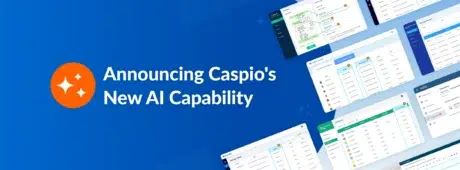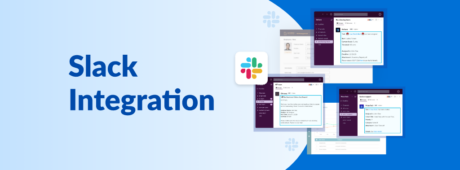Navigating HR Compliance in the Gig Economy Through Digital Solutions
November 22, 2023

The gig economy has been both a boon and a blocker for workers and organizations alike.
By definition, the gig economy is a “way of working that is based on people having temporary jobs or doing separate pieces of work, each paid separately, rather than working for an employer.” Gig workers go by an assortment of names, including “freelancers”, “independent contractors”, “temporary workers”, “part-timers”, “moonlighters” and more.
Under the gig economy, workers can enjoy flexible hours, work-from-anywhere set-ups, tax breaks and more. Meanwhile, businesses that employ gig workers can benefit from a cost-effective arrangement where they can choose to onboard contractors only as needed on shorter employment terms.
But this same flexibility comes with a lack of structure that, if not managed properly, can lead to costly problems. For businesses in particular, one major challenge of the gig economy is regulatory compliance.
Uncharted Waters: Compliance Challenges in the Gig Economy
Beyond the usual financial and operational difficulties, gig work can pose major human resources (HR) concerns.
For starters, the concept of a gig economy is relatively new. It first emerged as a way for people to survive following the 2008 financial crisis by taking on multiple side hustles and odd jobs in the absence of regular, full-time employment. It has since gained traction in the digital age, where remote working is possible. As such, the legal aspect of the gig economy remains mired in gray areas and uncertainties.
From an HR compliance perspective, here are some of the biggest challenges businesses can face when engaging with gig workers.
Certification Issues
Determining the employment status of gig workers can be tricky. In fact, the United States government has made multiple attempts to define what classifies as an “independent contractor”, each time impacting employers and employees in the gig economy.
In October 2022, the Biden administration proposed that gig workers who are “economically dependent” on a company be considered regular employees to give them access to more benefits and legal protection than independent contractors. This, however, effectively made gig workers more expensive to hire than full-time employees. Without the proper safeguards, the amendment could easily put millions of freelancers, part-timers and contractors out of work. And considering that nearly 40% of the US workforce has side hustles – who raked in a whopping $1.4 trillion in earnings in 2022 – the country is sure to feel the impact of losing these workers.
For businesses, misclassifying workers as independent contractors and vice-versa is a multi-layered problem. From a legal perspective, this can lead to regulatory penalties and legal liabilities as different employment classifications come with distinct sets of rights and obligations. Financially, it can incur unforeseen costs such as retroactive benefits, overtime pay, tax implications and more. HR-wise, the wrong employment terms can drive away good talent, lower employee engagement and productivity, and even lead to potential lawsuits.
Improper Benefits and Entitlements
Gig workers are not entitled to the same benefits as full-time employees. The problem, however, is that it is not always clear what benefits gig workers do get, at least in the US. Prior to the Biden administration proposal, the preceding Trump administration issued a blanket rule in 2021 that all gig economy workers are to be considered independent contractors, meaning they are not entitled to federal minimum wage and overtime requirements.
When the Biden administration effectively reversed this rule in 2022, they emphasized that classifying whether a gig worker be considered an independent contractor or an in-house employee will be done on a case-by-case basis. In the absence of any national or federal standards, defining eligibility for benefits and entitlements falls to companies. This can make it tricky – albeit imperative – to find common ground with workers and agree on terms that work for both parties.
At best, businesses can have a default but flexible benefits package, which they can amend depending on the contractor. At worst, they will need to craft new packages with each contractor they onboard, making it a time-, resource- and labor-intensive process.
Evolving Regulations
The dynamic natures of gig work, government and policymaking, and the digital age make for a perfect storm of constant regulatory changes. Staying abreast of these changes and adjusting contracts and packages accordingly is crucial for HR compliance, but businesses can, understandably, fall behind. It is only a matter of knowing about upcoming policy changes; it’s a matter of reorienting and re-structuring entire operations to account for these changes, which not all companies can afford.
Of course, failure to adapt to new regulations may result in non-compliance and legal consequences. Companies must strike the right balance between staying compliant and sustainably managing the associated operational changes (and costs), which they can achieve with the right digital solutions.
Guiding Post: Navigating HR Compliance With Digital Solutions
Digital solutions can play a pivotal role in addressing HR-related compliance challenges that businesses face. With the right compliance management tool, companies can ensure they abide by regulatory and legal mandates.
HR-specific compliance management systems are a boon to HR departments. In general, these tools are updated by their providers every time there is a change to relevant labor laws, making it so that the business is not solely responsible for keeping up with regulatory changes. While most compliance tools are set to local regulations, a number of options are available for businesses that need a more global scope, especially those working with international partners and contractors.
When it comes to the complex issue of employee classification, HR departments can rest easier supported by tools designed to ensure the contracts they make and the benefits package they provide are, at the very least, all meeting the minimum legal requirements.
In the same vein, managing benefits and entitlement packages also become easier with HR compliance systems. Businesses can create default but flexible packages, streamlining the process of negotiating and amending terms with individual contractors. These tools can also serve as a secure, online database where these contracts can be stored, serving both as a repository of past documents as well as an information hub that can guide future decisions, particularly in light of inevitable regulatory changes.
Finally, HR compliance management tools can automatically monitor regulatory changes and notify relevant users within the business so they can pivot their operations to maintain compliance and mitigate legal risks.
Meeting Requirements: Creating the Perfect Custom Solution
But as sophisticated and powerful as out-of-the-box HR compliance management tools can be, there is no replacing the value that a tailored solution provides. So, for businesses in need of specific, custom tools, Caspio’s award-winning low-code platform gives you the ability to design and create your very own compliance solutions.
Our versatile platform empowers even non-technical users with little to no coding background to build the right digital tools they need. Get in touch today and learn how Caspio can help you solve your HR compliance challenges.















